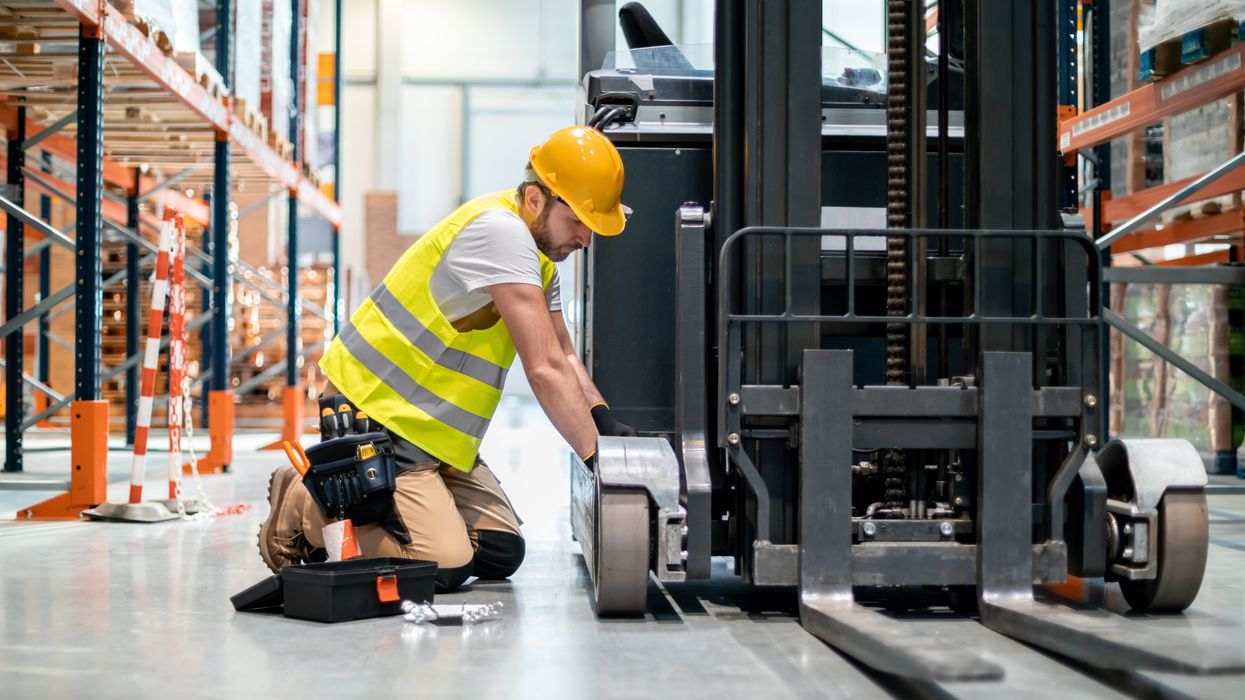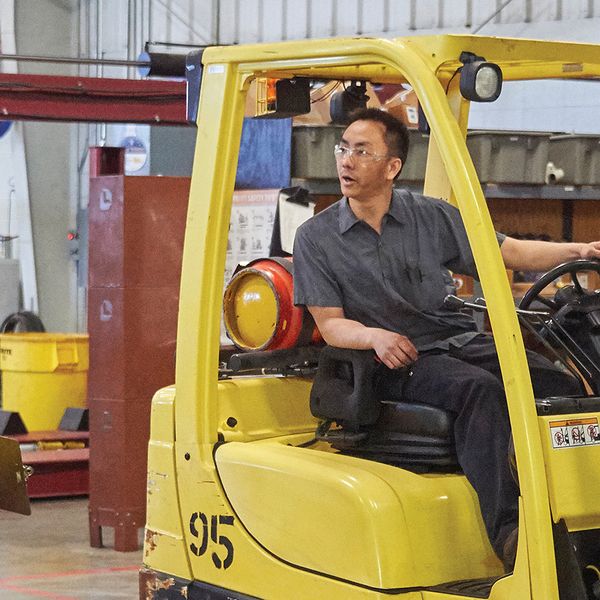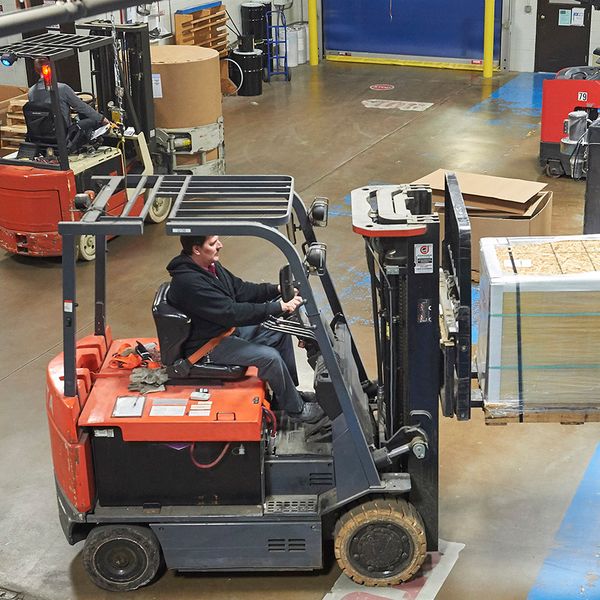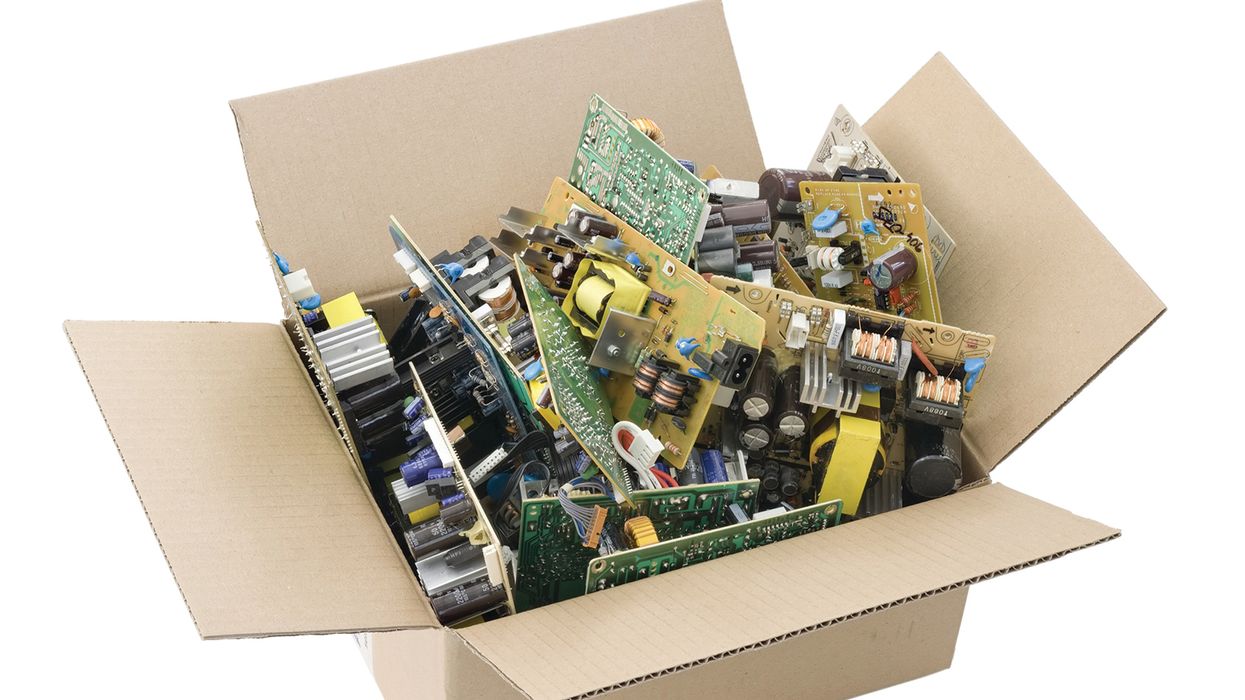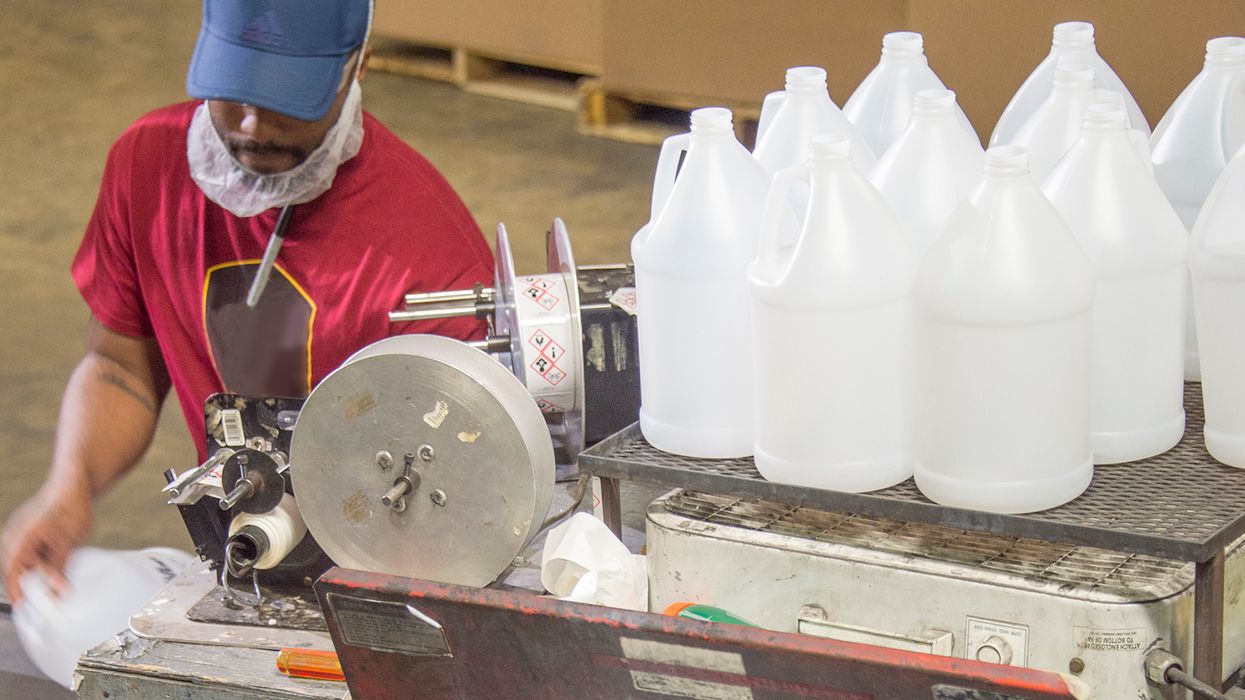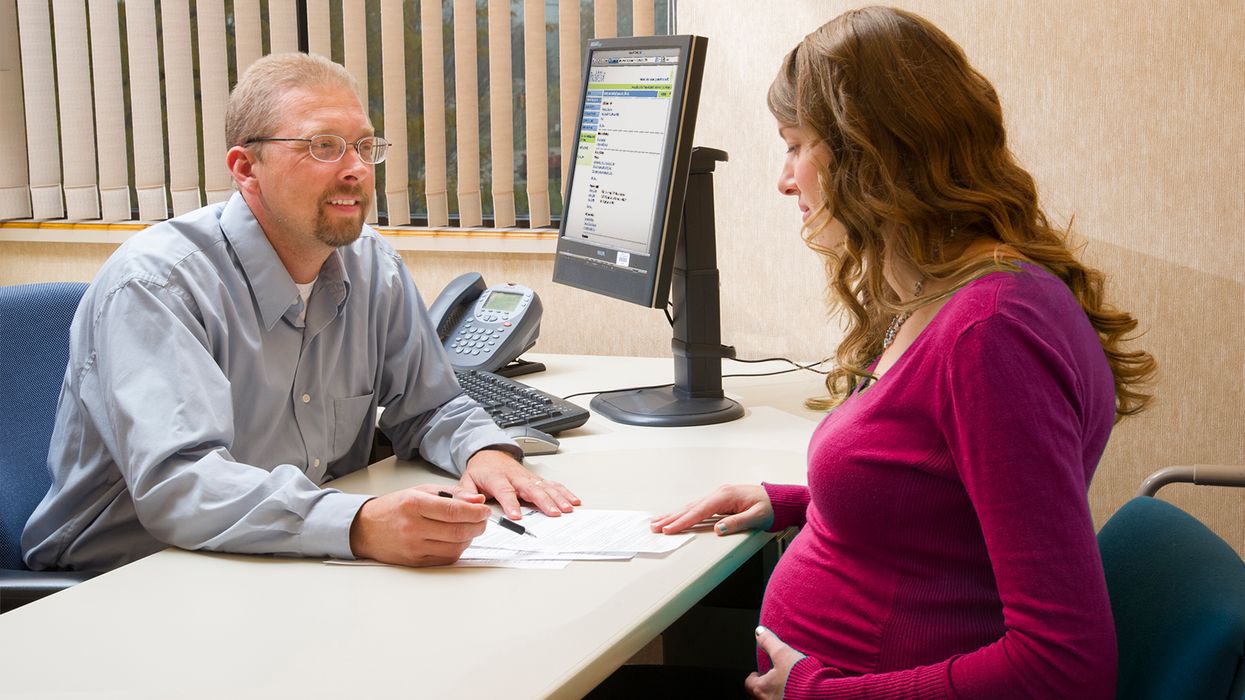Inspection is the key to forklift safety
Forklifts are everywhere and we often take them for granted. To keep everyone safe, forklifts must be inspected before operating the forklift each day, or at the beginning of a new shift if it is used around the clock.
Inspect the forklift for damage, defects, and unusual conditions. Consider these items:
- Ensure fork pins and stops are in place.
- Verify cowling and body parts are not broken, loose, or missing.
- Check the fuel level, crankcase oil level, radiator fluid level, hydraulic fluid level, and the battery electrolyte level.
- Check for leaks by looking underneath the truck.
- Inspect all belts, hoses, and tires for excessive wear or damage.
- Check the operation of the brakes, steering, lift and tilt controls, hour meter, lights, and horn.
- Verify water mufflers are checked daily or often enough to keep them adequately filled.
A forklift should be removed from service and repaired by an authorized person whenever:
- The forklift is in need of repair, is defective, or in any way unsafe.
- The forklift emits hazardous sparks or flames from the exhaust system.
- There are leaks in the fuel system.
- A part of the forklift is found to be in excess of its normal operating temperature, creating a hazardous condition.
When repairing a forklift:
- Remember that only an authorized person may make repairs.
- Disconnect the battery before repairing the electrical system.
Prohibit flames, sparks, or electrical arcs in battery charging areas. Smoking is not allowed. Keep tools and other metallic objects away from the top of uncovered batteries. Follow instructions for handling gasoline, diesel fuel, and LP gas and for charging and changing batteries.
Proper inspection and maintenance help keep forklifts operating safely and protect the operators and others working around the lift.

